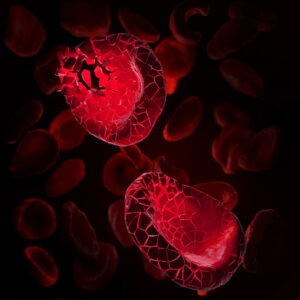Transfusion-associated graft versus host disease (TA-GVHD) is a rare complication that occurs when histoincompatible viable lymphocytes are transfused into an immunocompromised individual. The transfused lymphocytes recognize the recipient as foreign and mount an almost universally fatal immunological response. Leukoreduction filters are not completely effective at eliminating TA-GVHD; therefore, red blood cell components are irradiated to prevent TA-GVHD. Gamma-irradiators have historically been used, but contain a radioactive source and are expensive. X-ray irradiation should be equally effective in ablating lymphocytes, but little data exist. In order to compare X- and gamma-irradiation on the in vitro quality of stored red blood cells (RBCs), researchers in Australia pooled and split RBCs stored for different lengths of time (<5 and <14 days) and exposed them to either X- or gamma-irradiation. Hemolysis, potassium, metabolism, microparticles, ATP, and 2,3-DPG were all measured pre-irradiation as well as 6 hours and 1, 2, 3, 7, 10, and 14 days post-irradiation. No significant differences were found for any indices measured except for higher potassium release in RBCs treated with X-irradiation stored less than 5 days (p<0.0001). X- and gamma-irradiation were found to be similarly effective for treating red blood cell components.
Reference:

